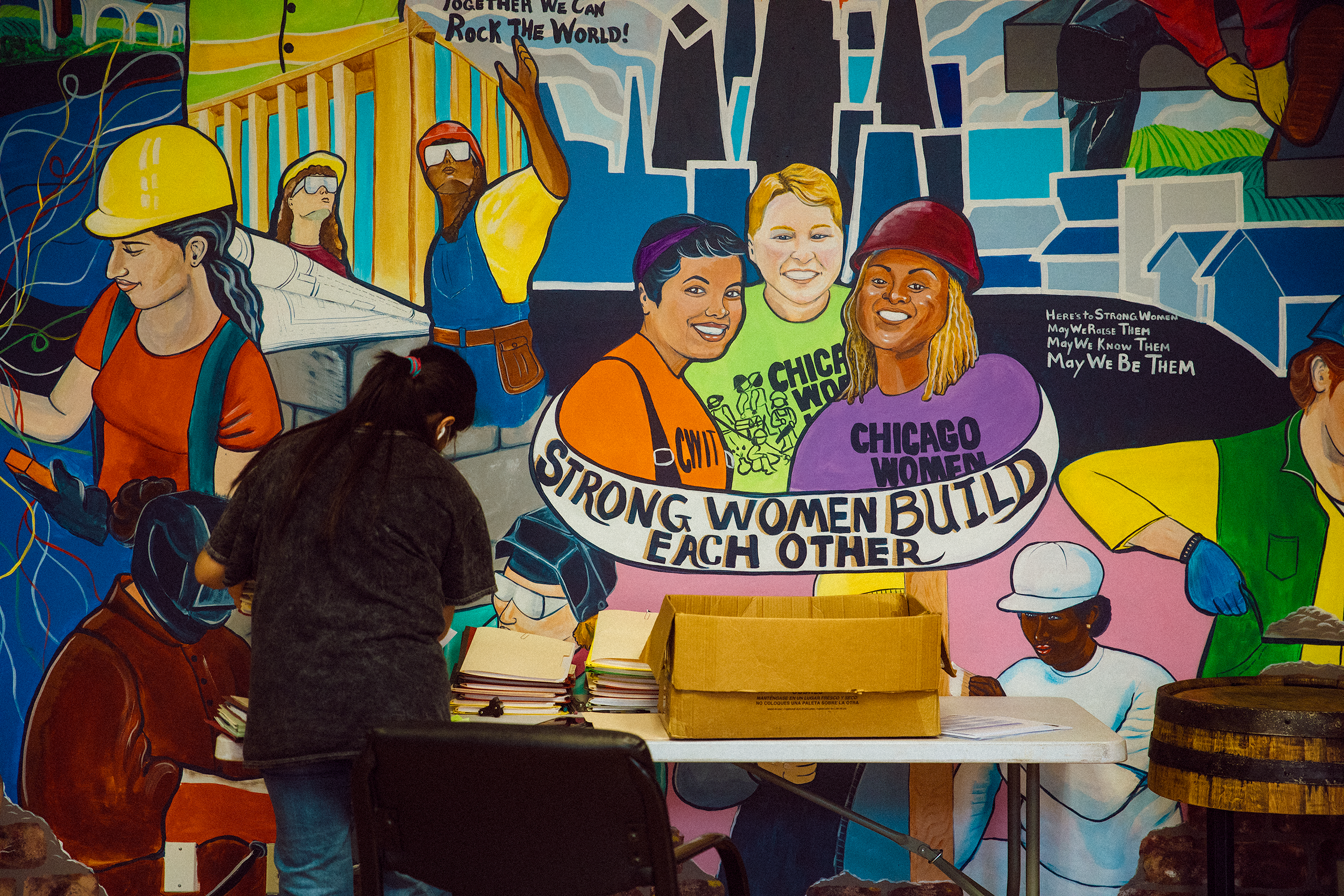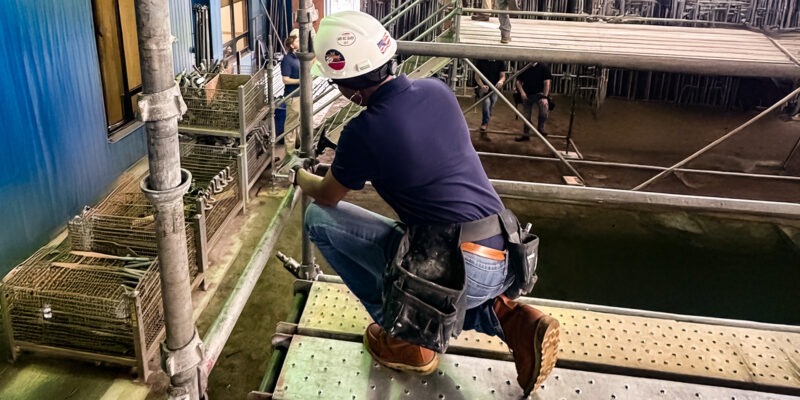Carmita Champ has long been interested in working in the building trades. As a high school student she studied electronics and had aspirations of becoming an electrical engineer. But, after being raised in the foster care system and becoming a young mother, a career in the skilled trades seemed out of reach. After she graduated high school, she focused on more traditional career pathways where women were more visible. When taking a break from community college to raise her child, the options offered to her were either childcare or administrative work.
In a world where career paths often seem predetermined, Champ’s story stands as a testament to reinvention and opportunity. After years in higher education administration, Champ found herself at a crossroads when COVID-19 disrupted her career trajectory.
A pivot born of necessity and curiosity
Initially, Champ transitioned to youth mentoring as a post-secondary director at a nonprofit organization, creating programming for high school students. However, she soon recognized the need to explore alternatives to traditional college pathways. Ironically, while researching trade opportunities for her students, Champ attended an information session for the Women in Non-Traditional Careers, (WINC) Pre-Apprenticeship Program, a program hosted by the Finishing Trades Institute. Camita was surprised when she herself was drawn to join the program.
“I went to the info session to gather information for my students,” Champ recalls. “And after giving it some thought, I decided to apply. The director informed me I had passed the assessment test and was accepted into the program.” This unexpected turn led her to resign from her position and embark on a completely new career path–one very similar to what she was drawn to in high school.
From academia to apprenticeship
Champ completed the WINC Pre-Apprenticeship program and chose carpentry as her trade. By January 2023, she had joined the carpenters pre-apprenticeship program and by that summer, she was working as a first-year Carpenter apprentice. The transition wasn’t without challenges – physically demanding work and being typically the only woman on her job site. Still, Champ found unexpected fulfillment in the tangible results of her labor and the long-term opportunities her career offered her, including potential entrepreneurship.

How women in trades grow businesses and economies
Organizations like Chicago Women in Trades (CWIT), have been championing women’s inclusion in male-dominated skilled trades careers since 1981. As Lark Jackson, Director of CWIT’s Equity Resource Center explains, there are compelling economic reasons for employers to embrace gender diversity in the skilled trades.
Women bring different perspectives, skills, and aptitudes to construction sites. As Champ notes, “Women have a very different eye on things… our rhythm is with a little more precision and care.” She observed significant waste on job sites that could be reduced through more thoughtful approaches to materials usage–a direct impact on a company’s bottom line.
Additionally, diverse job sites often experience improved morale and workplace culture.
“Women have a very different eye on things… our rhythm is with a little more precision and care.”
Building career pathways and breaking barriers
Chicago Women in Trades, a grantee of the W.K. Kellogg Foundation, offers comprehensive support through several key initiatives:
- Direct Service Programs: Pre-apprenticeship programs like CWIT’s Technical Opportunities Pre-Apprenticeship Program, Women Build Illinois program and the Women in Welding program provide foundational skills for women entering the unionized building construction trades, manufacturing and skilled trades careers.
- Policy & Advocacy: CWIT works at the local, state and federal levels to advocate for the implementation of best practices and legal interventions to counteract cultural biases and historic discrimination against women and people of color in the construction industry.
- Customized Training and Guidance: CWIT’s Equity Resource Center provides customized guidance and resources to pre-apprenticeship programs, registered apprenticeships, contractors, workforce development boards, employers and emerging tradeswomen’s groups on how to best recruit and retain women in the skilled trades.
Economic impact and future potential
The inclusion of women in skilled trades careers addresses critical workforce shortages while opening economic opportunities for all workers. Barriers to women’s entry and retention in the skilled trades–lack of career education, outreach, pipeline programs and harassment and discrimination–have limited the talent pool for registered apprenticeship programs and employers. By breaking these barriers, organizations like CWIT help create a larger, stronger and talented workforce.
For women like Champ, a trades career offers a pathway to financial stability and career growth. Despite initial wage decreases, the long-term earning potential, benefits and opportunities for business ownership make a career in the trades an attractive option for women seeking economic advancement.
As our economy continues to evolve, stories like Champ’s highlights the untapped potential of women in trades–not just for individual opportunities, but for business innovation, competitiveness and economic growth. Through organizations like Chicago Women in Trades, these pathways become more accessible, creating stronger, more diverse industries, ready to meet tomorrow’s labor challenges.







Comments